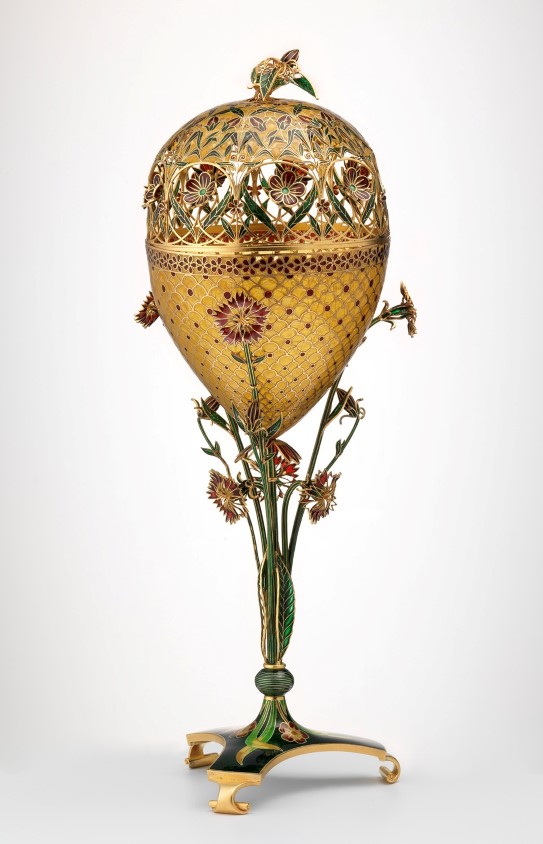Goblet (audio description)
Torolf Prytz
Transcription
Description
Goblet
Artist: Torolf Prytz
Produced by J. Tostrup goldsmithing company
1900
The trophy is thirty-four centimeters high and made of gilded silver. It is richly decorated with enamel in various techniques and in clear, translucent colors. The foundation is tripod, an organic plant-like stem is the "neck" of the cup, and the "body" itself is egg-shaped with a lid, where the handle on top is shaped like a lily of the valley. Around the outside of this, are floral motifs.
Narrator:
This Norwegian goblet was once exhibited at an esteemed global exhibition. It was one item in a whole collection that would ultimately be awarded a Grand Prix, the most sought-after prize.
The year was 1900, the place was Paris. Participating at a World Fair had never been more prestigious. The organizers expected 60 million visitors. And this was where Tostrup, a Norwegian goldsmithing company, unpacked this exclusive goblet. Peder Valle, an art historian at the National Museum, explains:
Peder Valle:
This is an object that was planned in complete secrecy. It’s a technical masterpiece and executing it required a lot of time, effort and, not least, money. Then it was packed up and sent off to Paris. That in itself was prestigious, getting to participate in a major exhibition, raising the profile both of your country and your business.
Narrator:
The goldsmiths of Tostrup had crafted a whole collection of beautiful objects using networks of narrow silver-gilt wire and plique-à-jour enamelling, a technique that produces cells of translucent enamel, almost like stained glass. This was a technique in which Norwegian craftsmen were among the most highly skilled in the world.
Peder Valle:
When the crate of precious objects arrived in Paris from Tostrup’s workshop, museum directors were queueing up to make purchases for their collections. And it’s said that by the time the exhibition was over, everything on display from Tostrup was sold.
Narrator:
And this was at a time when Norway was still in a union with Sweden. It was important to forge one’s own identity in a global arena where one could both see and be seen. And so they succeeded in selling everything, and returned home with a kind of Olympic medal for Norwegian goldsmithing.